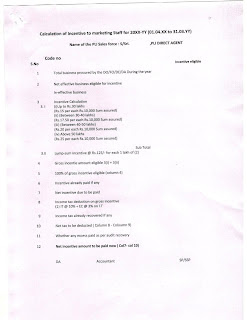 | |
| India Post Payments Bank, to be launched by March 2017, will start with about 50 branches across India; 10% will be in north-eastern states. Photo: Bloomberg |
New Delhi: India Post is accelerating
preparations for the launch of its ambitious payments bank—from putting a board
of directors in place to finding a technology partner.
The postal service aims to put in place a board
of directors in the next one month or two; it has also approached the
appointments committee of the cabinet (ACC) to appoint a chief executive
officer (CEO) and chief operating officer (COO) for India Post Payments Bank
(IPPB), S.K. Sinha, secretary, department of posts (DoP), said.
The plan is for IPPB to start operations by March
2017, minister of communications and information technology Ravi Shankar Prasad
had said in May.
The Reserve Bank of India (RBI) in August gave
conditional licences to 11 among 41 applicants for setting up payments banks, a
regulatory innovation aiming to promote financial inclusion by targeting small
depositors such as migrant workers, low-income households and tiny businesses.
Three licence winners have since withdrawn their
applications—Tech Mahindra Ltd; Sun Pharmaceutical Industries Ltd promoter
Dilip Shanghvi and his partners IDFC Bank Ltd; and Telenor Financial Services
and Cholamandalam Investment and Finance Co.
India Post is going full speed ahead.
Independent directors will make up a majority of
the members on the IPPB board, which will also include government
representatives, including officials from the department of posts, Sinha said.
Besides approaching the ACC to appoint a CEO and
COO, it has requested several public sector banks such as Punjab National Bank,
Canara Bank, Bank of Baroda and Bank of India to suggest potential candidates
from their banks for board or executive director positions.
A committee will be set up in a matter of days to
choose candidates for other important positions, such as chief technology
officer and chief financial officer.
“I suspect they (CEO, COO) will have to come from
the public sector,” said Ravi Trivedi, an independent consultant who was
formerly with audit firm KPMG.
“You need to have somebody who actually
understands at some level the culture of a public sector organisation and then
transform it from inside,” he said.
The bank will initially have more than 2,000 of
its own employees, separate from the department of posts.
The department expects to float a request for
proposal seeking a technology partner. Sinha didn’t say how much the technology
contract would be worth, but expects a vendor to be on board by the end of
August.
Some experts have questioned the viability of
payments banks because of tough regulatory requirements, potentially thin
margins and competition from established commercial banks.
Payments banks are not allowed to give loans and
cannot accept deposits above Rs.1 lakh. While the
structure limits the scope for growth, it also reduces the exposure to risk and
volatility faced by commercial banks.
IPPB probably has the best shot at success in the
payments banking space, with a distribution network of 154,939 post office
branches spread in the farthest corners of the country.
The government has already spelt out plans to
open 650 IPPB branches by September 2017.
The bank will start with about 50 branches, which
will be spread across metros, tourist places, state capitals and remote
regions, with at least 10% reserved for the north-eastern states, according to
Sinha.
The payment bank branches will be separate from
India Post and will be staffed by a separate set of employees, Sinha said.
To leverage the strength of the vast postal
network, the post office branches will be linked to the payments bank and will
offer IPPB services.
“The post offices will act as banking
correspondents for the payments bank,” Sinha said. IPPB is also expected to get the support of more
than 250,000 Grameen Dak Sewaks— agents recruited by the postal department to
service in rural areas—in enrolling account holders.
India Post already accepts money from customers
as deposits in post office bank accounts and long-term deposit instruments such
as the National Savings Certificate.
Banks including Barclays Plc., Deutsche Bank AG,
Citibank NA and several state-owned banks have offered to partner with the
postal service, Mint reported on 3 June. Sinha said there were no plans
for such a tie-up.
Source: www.livemint.com/











































